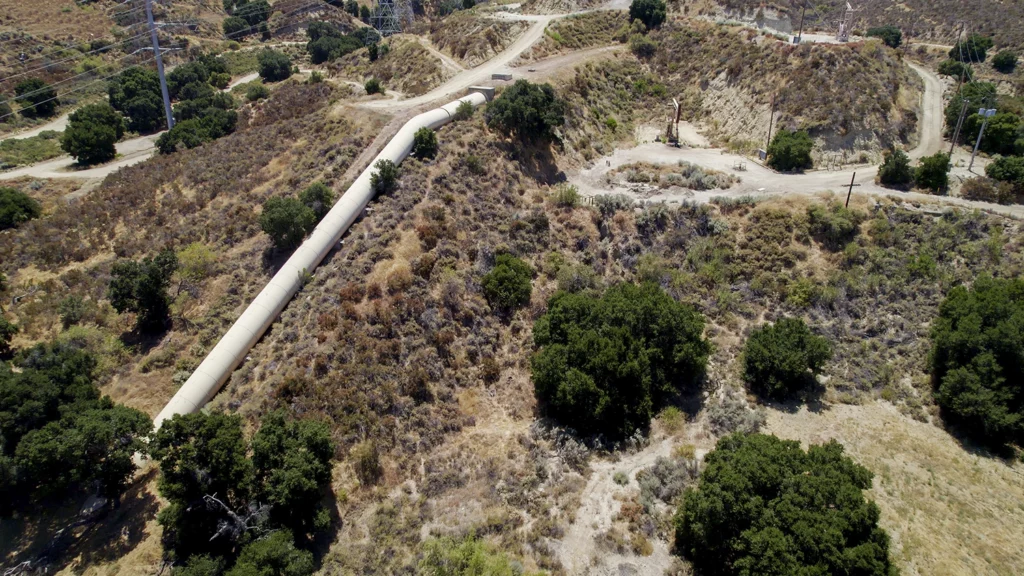Conveyance
Conveyance
At Cadiz, we see conveyance as a a strategic addition to any region. Moving water efficiently from one area to another is essential in much of the world.
Efficient conveyance requires two ingredients: the infrastructure to move the water, and the know-how to make that happen. Starting with Cadiz’s northern pipeline project, we’re demonstrating how efficient conveyance works. Not only are underground pipelines far better than aqueducts exposed to evaporation, but an extensive network of pipelines already exists, readily adapted to transport water. The northern pipeline is a pioneering innovation in converting fossil-fuel infrastructure to promote resilience against climate change.

Facilitating Supply and Storage
Running next to Cadiz’ aquifer in the eastern Mojave Desert is a 220-mile section of pipeline that the company strategically purchased in 2014. While built for transporting oil, the 30-inch steel pipes are easily converted to safely and efficiently move water. Running northwest, it will connect not just to water-scarce communities along its path, but also to the State Water Project’s California Aqueduct, a major source for all southern California. In addition, Cadiz is building a new pipeline along a railroad right-of-way for 43 miles southeast to another major source for the region, the Angeles Tunnel aqueduct branching off the Colorado River.
These pipelines support not just supply but also storage. The Cadiz aquifer has room to store at least one million acre-feet of water, enough for two million households. In a wet period, water systems could send their excess to be stored at Cadiz, and then withdrawn in dry periods.
Learn more about our freshwater supply solution
Learn more about our underground storage bank
Enabling Transfers of Water Across Long Distances
Apart from floods or droughts, one area might need more or less water than usual. Cadiz’s pipelines will serve as a hub for California’s water network and beyond. One water system can move an abundance of water efficiently– enabling water trading that is crucial for reliable local supplies.
See how our pipelines connect to other major infrastructure here
Pioneering the Conversion of Fossil-Fuel Pipelines
Climate change is causing greater weather variance even over short distances, so we need more conveyance. Fortunately, the fossil-fuel age has left us 2.6 million miles of underground pipeline in the United States alone. Much of this network has either been retired or soon will be, and we can repurpose it to carry water. Cadiz is the first to develop this infrastructure and expects to apply this expertise to water systems throughout the world.